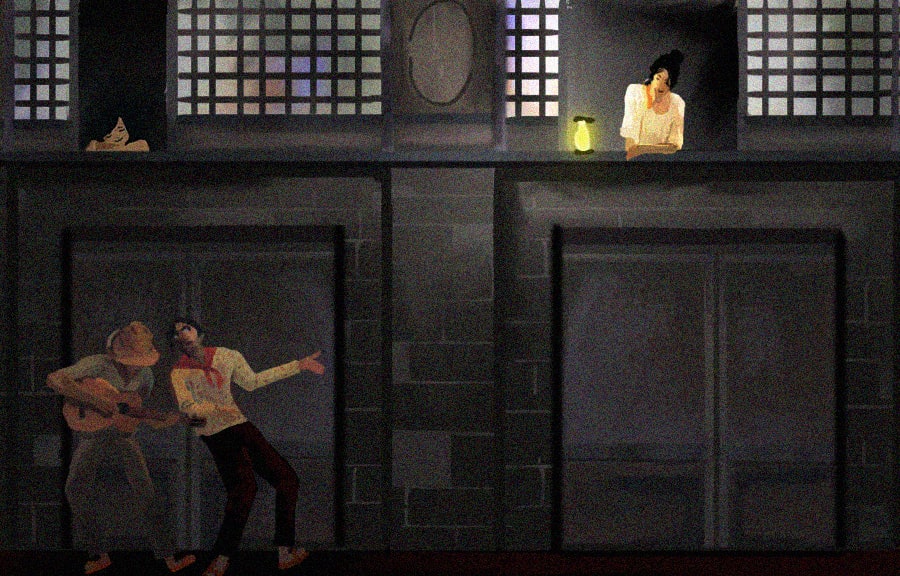The Evolution of Dating In the Philippines
Ironic as it may sound, change is the one thing that’s constant in life. It’s evident in how societies evolve over time. Suppose we were to look at things on a small scale. In that case, we could even safely say that our attitudes and general approach towards love are vastly different from our parents’ and their parents’ before them in the history of dating in the Philippines.
The same notion applies to courtship and dating, concepts that come before and are much more tangible than the “falling in love” part. So, without further ado, let’s explore how dating has changed throughout history.
Of Dating Origins And Conservative Societies

Before we can get into the nitty-gritty details of traditional dating (or, more accurately, courtship) practices in the Philippines, it’s worth noting that the term date was first inadvertently coined by George Ade in 1896.
He wrote about a clerk named Artie, who was heartbroken and despondent about his fading love, in a newspaper column. Artie confronted his sweetheart about seeing other men in social settings. In reply, she said, “I s’pose the other boy’s fillin’ all my dates?” Dates, in this regard, referred to the dates in the calendar.
The insult that Artie’s sweetheart felt at the confrontation has plenty to do with how the patriarchal society treated women at the time. Women who allowed themselves to be openly courted were looked down upon. People believed that women’s independence from their families, particularly from their fathers, made them loose and easy.
It was similar for Filipino women during the Spanish colonial times. Since the Spaniards brought Western social customs with them, women were taught to be conservative, quiet, and timid as these are the qualities that eligible bachelors find attractive. Natural beauty was also of great importance, while any semblance of personality was frowned upon by most people.
Another consideration was power, societal standing, and money. Women from affluent backgrounds were encouraged to mingle with men who can bring better status to the family. This way of thinking was widespread, so it isn’t all too surprising that marrying for love was something that not every person could do back then.
Finally, closing off this primer is that romantic relationships and marital unions in the past were strictly heterosexual. Queer folks were either ostracized for being true to themselves or left to hide that self in the dark and marry someone of the opposite sex.
The Labors of Love Throughout Philippine History
Dating in the Philippines in primordial times wasn’t so much the dating we know now, considering the term hadn’t been conceived yet. Instead, people viewed it as courtship or panliligaw, as it’s called in Tagalog. Men and women typically entered the courting stage with the end goal of marrying each other. Moreover, courtship was both a public and private affair.
Suitors did it in the woman’s home (private space) in front of the woman’s family (public audience). Sometimes, the man’s family was present, too. During courtship, the strong familiar presence also had men wooing family members, usually the woman’s parents, to earn their blessing for the wedding. No blessing means no wedding.
Courtship also tended to be a slow and gradual process that spanned months and involved numerous phases to ensure that the pair was the right match. Aside from gifts and the occasional public outings, various art forms also made their appearances during courtship as they were considered romantic during that time.
Below we discuss further the various courting practices that were prevalent during our ancestors’ time. Many of these morphed and evolved into dating practices that some people still do nowadays.
Pasaguli or Riddle Courtship

A courtship is something that carries more commitment compared to the casual connotations of dating. It involves the man trying to woo the woman and her family through various activities. It can only end in two ways: marriage or complete rejection.
Couples can’t meet just anywhere. The man can only see his partner in her residence, in the presence of her family. Interested parties seeing each other in any other place would be a no-no unless one wanted to earn the bride’s family’s disapproval.
Courtships seem straightforward enough since what you need to do is woo the Filipina and her family. Where does the ‘riddle’ part of the affair come in then?
For certain Philippine cultures, such as the Palawanons, the bride’s parents evaluate a courter’s suitability through their aptitude in solving riddles. A satisfactory answer earns the bridegroom and his family the right to discuss the dowry for the marriage.
However, not all regions relied on riddles to assess a suitor. Other families judged how one would display his creativity, reliability, and wit.
Harana or Serenade

Wooing a woman wasn’t just done through speaking. Some suitors also did it through song, which most people referred to as harana or serenades. If you don’t know what that is, it’s similar to Say Anything’s famous boombox scene. Just change the boombox into a guy singing with a musical instrument of his choosing—usually a guitar.
More extravagant performances had the impression of deeper feelings for the recipient. Original compositions garnered even more appeal—provided that the suitor wrote the song well. Suitors who weren’t blessed vocal-wise were still able to perform harana. Some gathered their friends to create an entire ensemble, complete with vocals, backup singers, and numerous complementary instruments. Others decided to express their affection through other, less musical methods.
Balak or Spoken Poetry

A couple in a courtship had limited forms of communication. Conversations with each other can’t become too intimate since they can only meet in person in the female’s home. Society strictly frowns upon lovers meeting anywhere else. That’s why letters became one of their primary forms of correspondence.
Exchanging letters was not only a reliable means to keep in touch but also another way to wooing your partner. Filipinos appreciated humor and originality in many forms, including the written word.
Suitors that weren’t musically gifted had the chance to court the object of their affection through balak, or spoken poetry. This part of courtship involved constructing thoughtful love verses and delivering them to the person they were courting with seriousness and sincerity.
What if one wasn’t exceptionally talented in both music and writing? Sometimes, expressing one’s love through a heartfelt letter can be enough to sway the Filipina woman’s heart and family. However, the suitor might need to put in a little more elbow grease into winning them over for the latter.
Paninilbihan or Servitude

Filipino culture is family-oriented, both today and in the past. The only way you can marry a woman you’re interested in is by securing her family’s approval. That’s why Filipino courtship also included paninilbihan or servitude, where the man helps out around his lover’s house.
Doing servitude is the suitor’s way to prove that he can be relied upon by the object of his affection and his in-laws. It’s especially appreciated if he handles the labor-intensive tasks, which in that time would be gathering firewood, transporting water, or assisting with other farm tasks.
More Modern Dating Practices
Today, at least in the traditional sense, courtship has become a relic of the past. However, singles of later generations still hear stories of what it’s like, from the patience involved between the couples to the hurdles they had to overcome.
This idea of courtships is one of the things that fuel a Filipino singles’ penchant for romantic gestures. Some of its old influences and practices are still around, though. Giving gifts is still one of the most common ways to show interest, for one. Expressing one’s affection through song also remains prevalent in Filipino culture and media.
However, one can’t deny that the dating landscape has changed in many ways. One of the most significant changes is that singles have more ways to meet new people today.
Recommended reading: 9 Differences Between Online Dating and Traditional Dating
Soirees

Filipinos love hosting social gatherings. Some of these events include soirees, where singles attend with hopes that they can click with someone they meet there. However, success isn’t guaranteed, even if the gathering’s purpose is to help people find love. That’s where matchmaking, also known as reto to Filipinos, comes in.
Matchmaking helps singles meet someone they’ll at least have a shared interest with. They won’t need to worry about meeting someone suspicious since their mutual friend can vouch for them. While it doesn’t always result in a lasting relationship, the common ground can make the getting-to-know phase easier.
Unfortunately, not everyone has a friend that knows someone dateable. That’s where online dating comes in.
Local Online Dating

One of the most significant ways one can tell how dating has changed locally is through the widespread use of dating apps — especially by the later generations. Many prefer it due to the more comfortable means of connecting with other people. However, that doesn’t mean that it comes with its disadvantages.
Matches made through dating apps and websites tend to feel artificial at times due to the lack of physical contact and interactions. That doesn’t mean that finding love online is impossible, though. Interested singles can easily overcome the hurdle of impersonality with effort and sincerity.
International Online Dating

International online dating is similar to local dating, at least when it comes to its ease of connections. However, foreigners looking to date Filipinos should be more careful. There’s a chance that the person they’ve matched with is an online scammer looking to make a quick buck.
Of course, that doesn’t mean that all the Filipinos one meets online is a swindler in disguise. It just means that one should be more vigilant when getting to know someone online and be on the lookout for any red flags that indicate malicious intent.
Cultural differences are another reason why international online dating can be difficult. Filipino culture tends to be on the conservative side, while Western cultures are more liberated. The clash in traditions and beliefs can lead to continuous disagreements if one doesn’t talk things out with their partner.
Most people think that online dating can serve as a substitute for traditional dating when it’s not. Online dating isn’t the endpoint for a relationship. As one gets to know their partner and talk more often, chats will progress into voice calls, video calls, and eventually, face-to-face meetings.
As you may have realized by now, dating in the Philippines hasn’t always been the way it is now. But with technology and societies constantly evolving, it is no surprise that our approach to love has evolved with them.






